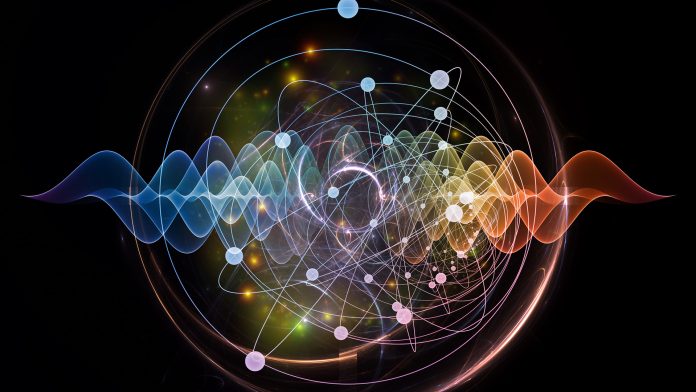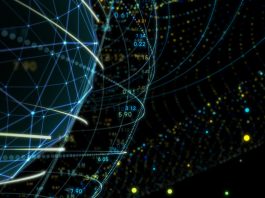A research team from the University of Hong Kong’s Department of Physics (HKU), has developed a novel algorithm to measure quantum entanglement entropy, bringing scientists a step closer to the actualisation of quantum materials.
How important is gathering knowledge on quantum materials?
Scientists stress that quantum materials play a crucial part in propelling human advancement, which is why the search for additional novel quantum materials with exceptional properties, has been considered urgent among both the scientific and technological communities.
2D Moiré materials—like twisted bilayer graphene— have a comprehensive role in the research of novel quantum states, such as superconductivity, which suffers no electronic resistance. Furthermore, they also play a role in the development of ‘quantum computers,’ which are vastly surpassing the best supercomputers in existence.
What happens when materials reach ‘quantum state?’
Materials arrive at quantum state—when thermal impacts can no longer impede quantum fluctuations— as the quantum phase transitions are activated between different quantum states or quantum phases at extremely low temperatures (near Absolute Zero, -273.15°C), or under exceptionally high pressure.
Therefore, experiments investigating both when, and how atoms and subatomic particles of different substances communicate and interact with each other freely through entanglement in a quantum state, are prohibitively costly and difficult to execute.
What further complications are involved in this study?
The study is additionally complicated by the malfunction of the classical Landau, Ginzburg, and Wilson (LGW) framework to describe certain quantum phase transitions, dubbed Deconfined Quantum Critical Points (DQCP).
Therefore, scientists questioned whether DQCP realistic lattice models could be found to determine the inconsistencies between DQCP and QCP. However, despite dedicated exploration of the topic, the production of copious numerical and theoretical works with conflicting results, the solution remains elusive.
Mr Zhao Jiarui ZHAO and his research team from HKU successfully made a momentous step towards resolving the dispute through the study of quantum entanglement, which marks the fundamental difference between quantum and classical physics.
How did scientists develop this novel method?
To test the effectiveness, the enhanced power, and to demonstrate the distinct difference between the entanglement entropy of normal QCP between DQCP, the research team chose two representative models —the J1-J2model hosting normal O(3) QCP and the J-Q3model hosting DQCP.
The research team considered previous models when developing this highly paralleled increment algorithm; the main aim of the algorithm is to divide the whole simulation task into many smaller tasks and employ massive CPUs to parallelly execute the smaller tasks thus greatly decreasing the simulation time.
This improved method meant that the team could successfully simulate the two models mentioned with high efficiency and better data quality.
By developing this new and efficient quantum algorithm of the Monte Carlo techniques scientists were able to measure the Renyi entanglement entropy of objects at the DQCP and found the scaling behaviour of the entropy. Scientists also noted how the entropy changes with the system sizes, and how this is in sharp contrast with the description of conventional LGW types of phase transitions.
What do these results mean for quantum materials?
With the nonequilibrium increment method, scientists successfully obtained the second Rényi entanglement entropy SA(2) at QCP and DQCP of the two models for different system sizes. It can be observed from the insets that when deducting the leading term (area law contribution from the entanglement boundary) the signs of the sub-leading term clearly distinguish the QCP (negative in J1-J2model,) and DQCP (positive in J-Q3model).
Thus, this eradicates the possibility of a description of DQCP based on a unitary assumption and raises several intriguing inquiries about the theory of DQC. This discovery is likely to lead to a more general characterisation of the critical behaviour of novel quantum materials.
“Our findings helped confirm a revolutionised understanding of phase transition theory by denying the possibility of a singular theory describing DQCP. The questions raised by our work will contribute to further breakthroughs in the search for a comprehensive understanding of unchartered territory,” explained Dr Zheng Yan.
“The findings have changed our understanding of the traditional phase transition theory and raises many intriguing questions about deconfined quantum criticality. This new tool developed by us will hopefully help the process of unlocking the enigma of quantum phase transitions that has perplexed the scientific community for two decades,” added Mr Zhao Jiarui, primary author of the study, and a PhD student who came up with the final fixes of the algorithm.
“This discovery will lead to a more general characterisation of the critical behaviour of novel quantum materials and is a move closer towards actualisation of application of quantum materials which play a vital role in propelling human advancement,” concluded Dr Meng Zi Yang.
This pivotal research has recently been published in the journal, Physical Review Letters.








